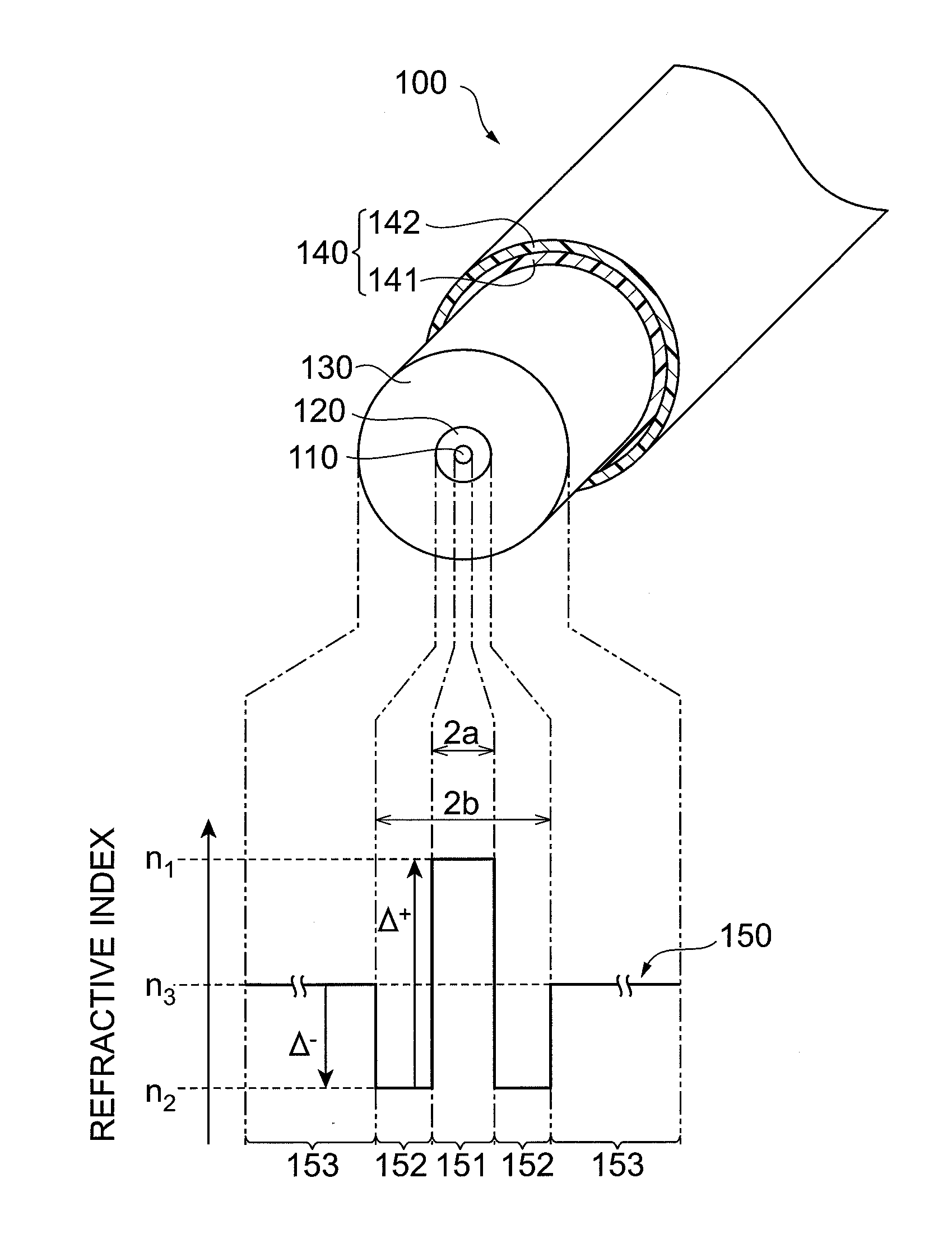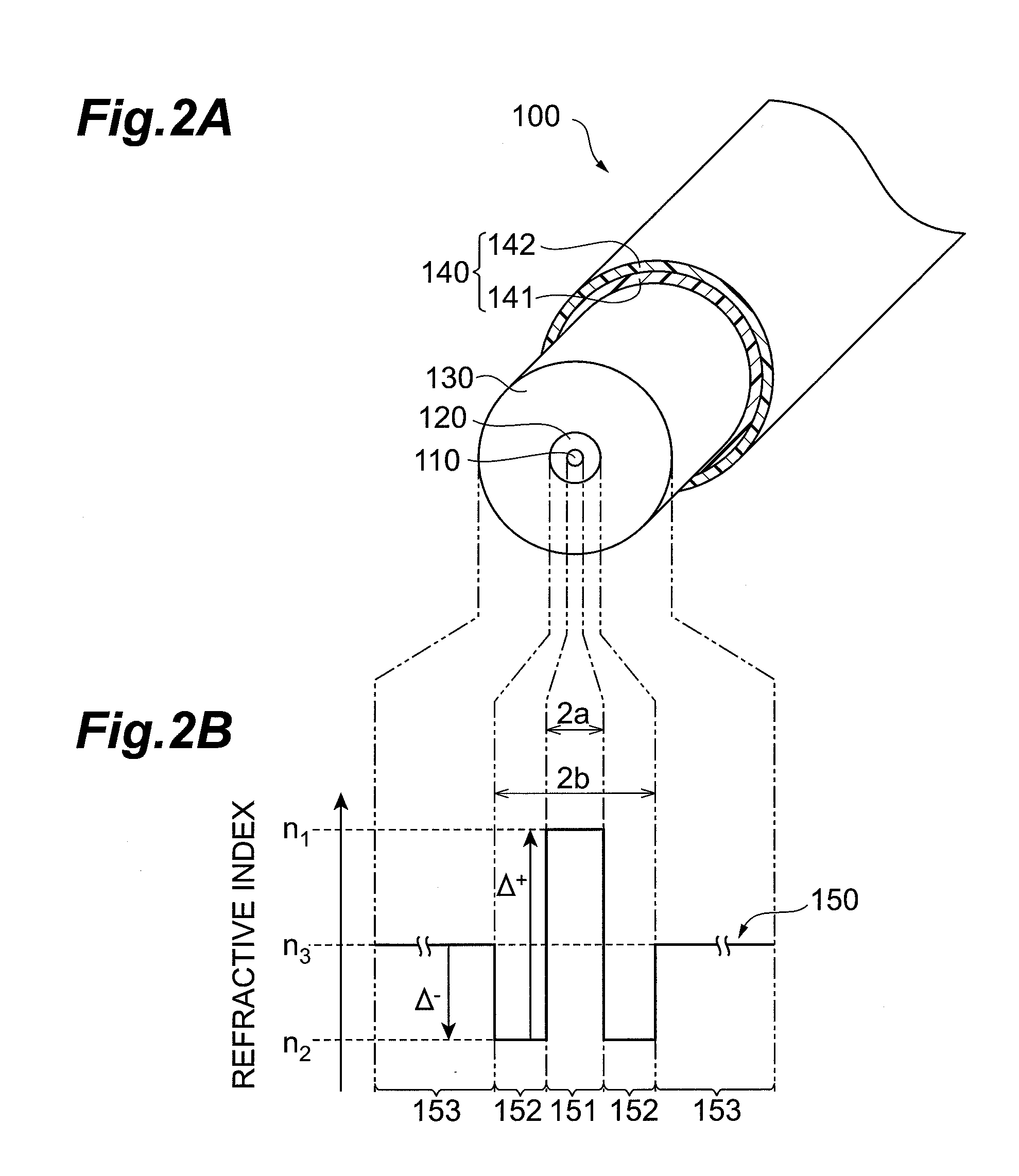Optical fiber and optical communication system including same
- Summary
- Abstract
- Description
- Claims
- Application Information
AI Technical Summary
Benefits of technology
Problems solved by technology
Method used
Image
Examples
Embodiment Construction
present embodiment obtained when changing the Young's modulus of coating resins and the effective area Aeff;
[0029]FIGS. 7A to 7C are graphs showing, in terms of the relationship between the effective area Aeff and transmission loss, the amount of improvement in OSNR over a single-mode fiber (SMF) caused by differences in splicing states in a repeater span;
[0030]FIG. 8 is a flowchart for explaining actions for determining the structure of the optical fiber according to the present embodiment; and
[0031]FIGS. 9A and 9B are views showing the structures of respective embodiments of the optical communication system according to the present invention.
DESCRIPTION OF THE PREFERRED EMBODIMENTS
[0032]In the following, embodiments of the optical fiber and optical communication system according to the present invention will be explained in detail with reference to FIGS. 1, 2A, 2B, 3 to 6, 7A to 7C, 8, 9A, and 9B. In the description of the drawings, identical or corresponding components are design...
PUM
 Login to View More
Login to View More Abstract
Description
Claims
Application Information
 Login to View More
Login to View More - R&D
- Intellectual Property
- Life Sciences
- Materials
- Tech Scout
- Unparalleled Data Quality
- Higher Quality Content
- 60% Fewer Hallucinations
Browse by: Latest US Patents, China's latest patents, Technical Efficacy Thesaurus, Application Domain, Technology Topic, Popular Technical Reports.
© 2025 PatSnap. All rights reserved.Legal|Privacy policy|Modern Slavery Act Transparency Statement|Sitemap|About US| Contact US: help@patsnap.com



